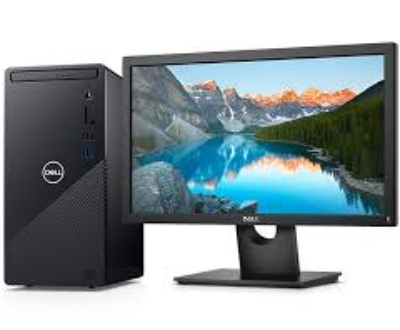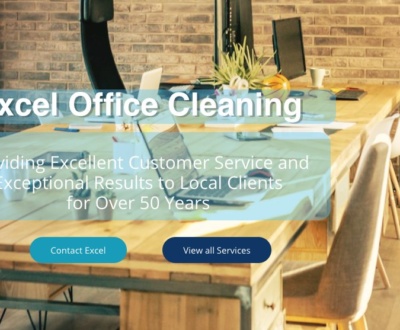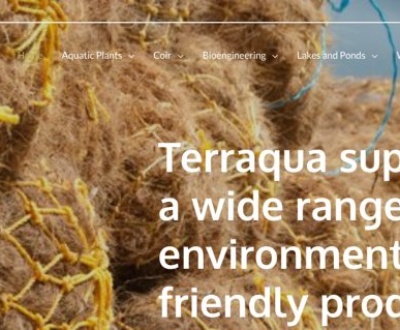Summary:
You might think the big decision is about which tablet has the best hardware, but there is far more to these devices than the hardware specifications. In fact, the big decisions are all about price and ecosystem. Alastair Dodwell explains more.
 The tablet market is rapidly changing. For a product class that did not exist four years ago there are now a plethora of devices on the market. Apple supercharged the tablet space with the original iPad, launched in the summer of 2010. Since the initial iPad, Apple has steadily enhanced the iPad with newer versions, culminating with the most recent iPad (4) with retina display. At the last iPad launch Apple also introduced the widely anticipated iPad Mini. Since the original IPad launched, Apple have sold over 100 million devices. This article looks at the iPad Mini and the two main competitors: The Amazon Kindle Fire HD and the Google Nexus 7.
The tablet market is rapidly changing. For a product class that did not exist four years ago there are now a plethora of devices on the market. Apple supercharged the tablet space with the original iPad, launched in the summer of 2010. Since the initial iPad, Apple has steadily enhanced the iPad with newer versions, culminating with the most recent iPad (4) with retina display. At the last iPad launch Apple also introduced the widely anticipated iPad Mini. Since the original IPad launched, Apple have sold over 100 million devices. This article looks at the iPad Mini and the two main competitors: The Amazon Kindle Fire HD and the Google Nexus 7.

You may well think deciding between these units is a hardware choice, but it’s better to look at the larger picture and focus not just on price but on the complete eco-system that stands behind these products.
The Amazon Kindle Fire is an update to the Kindle family and adds an improved HD screen. The Nexus 7 recently added more memory for the same price. Apple has introduced a smaller tablet to complete at a lower price point, with the 7 and a bit inch iPad mini.
As Christmas looms these devices are going to be snapped up by the million, but which one is best for you?
The ground rules

There are two big deciding factors between these devices: price and ecosystem.
Second, I’m only talking about the 7-inch (ish) mid-size tablet offerings. Each of these vendors offers a larger 9- or 10-inch variety, and I’m not going to talk about them at all. You need to decide if you want a smaller or larger tablet (or both). This article is just about the 7-inchers.
Within this article, when I talk about “tablet” I’m speaking of the device that’s approximately 7-inches in size. That’s just so I don’t have to type “approximately 7-inch tablets” over and over, and you don’t have to read it.
The big differences
There are two big deciding factors between these devices: price and ecosystem. Put simply, the Kindle Fire HD and Nexus 7 enter the market at a lowish price £159 each while the iPad mini starts at £269. If you just want the cheapest, the iPad mini probably won’t be your choice.
The second big factor is and arguably the most important is the device’s ecosystem. Each of these devices is very firmly attached to its own ecosystem: Amazon for the Kindle Fire HD, Google’s Android for the Nexus 7, and Apple’s iOS for the iPad mini.
If you already have a big investment in any of these three ecosystems, the device choice may turn out to be a no-brainer. Let’s look at those ecosystems in a bit more detail.
The Kindle Fire vs. the Kindle Fire HD
In this guide, I won’t really be talking about the Kindle Fire (the first generation color Kindle). As of November 21, 2012, the Kindle Fire was still available for £129. But since it got beaten handily by the Nexus 7 on features, and the Kindle Fire HD is only £30 more, I won’t be comparing the original Kindle Fire to the other machines in this article.
The app world
The Apple’s App Store now contains over 1 million applications as of news release Nov 21 2012. Google not to be left behind also offers a boat load of apps from their Play site. Google claim 500,000 apps so far.
While it is possible to run Google app store Android apps on the Kindle Fire HD, there is some hacking and fiddling involved. According to The Verge, Amazon’s Appstore for Android had 50,000 apps as of September — but only a subset of them will run on the Kindle Fire or Kindle Fire HD.
An important factor (perhaps the most important factor) to keep in mind is that if you already have a substantial app investment, that investment transfers to the new device. So, for example, if you already have a full-size iPad with a pile of apps, you get those apps again on your iPad mini for free. That, alone, might justify the added price.
Clearly, when it comes to the absolute volume of available apps, the iPad mini and the Nexus 7 handily beat the Kindle Fire HD. But if you’re buying a Kindle Fire HD, you’re probably not buying it for the app store.
Application security vs. application variety
The Android ecosystem has been growing at an astonishing speed surpassing iOS in terms of number of units out there and reaching application quantity parity (at least according to Google, but not to Apple) a few months ago.
But there are some very serious qualitative differences between these two ecosystems.
The first issue is security. Apple’s iOS architecture “sandboxes” apps, so each app can’t touch much of what’s in any other application. Some apps can get to your contact list, but they can’t modify anything in the OS or files belonging to other applications, or the behavior of the machine.
On the other hand, Android lets everything be controlled and programmed by app developers. This allows applications like XBMC (the Xbox Media Center) to be ported to Android, but not iOS. Apple doesn’t allow some of the media codecs that XBMC uses. Apple is extremely careful about what apps it allows to be sold for iOS, where Google allows everything.
You can find apps for Android you just can’t find for iOS. This is good… and bad.
As CNN reports, Android malware is rising at a furious pace. Because each app can fiddle with the entire environment (assuming you grant it permission), a lot more damage can be done in Android than in iOS. It has also been revealed that certain third-party app stores are embedding malware payloads on otherwise legitimate Android products. This problem doesn’t exist for iOS devices.
If you want to run something specific and special, like XBMC, then you’re probably going to want the Nexus 7. But if you’re at all worried about security, the iPad mini is your choice.
Office ecosystem integration
The Nexus 7 is intimately tied into the Google ecosystem, so if you’re running Gmail, Google Calendar, Google Docs (which are part of Google Drive), the Nexus 7 is a no-brainer. You actually can’t use the Nexus 7 until you login with a Google ID.
Speaking personally, I really hated that. I don’t use Gmail (I use our Office365 corporate Exchange server), and I really didn’t want to immediately link my Nexus 7 to Google’s identity controls.
The iPad has a number of excellent Office clones, as does the Android ecosystem. However, the iPad mini will let you access a corporate Exchange server with the built-in Apple iOS email app, where you need to buy an Exchange-aware app for either the Kindle Fire HD or the Nexus 7. For anyone wishing to use a company e-mail system this alone is a key differential.
Amazon ecosystem integration
This is clearly a gimmee for Amazon, but for good reason. Amazon provides a wide range of added features to Kindle Fire HD purchasers, especially if you’re also an Amazon Prime customer.
If you are primarily a book lover and looking for an e-reader then the Kindle works very well. To be fair, the Kindle reader app works just fine on the iPad mini and the Nexus 7 as well, so if you just want to read Kindle books you’ve paid for, you can use any device. This, in fact, is the enormous inherent value in the Kindle ecosystem itself.
One thing to be aware off is that the base £159 Kindle Fire HD comes with “special offers”. These are ads that pop up in between programs you run (no, they won’t intrude while you’re reading). Most users tell me that they’re very unobtrusive, but do be aware that you’re paying £159 for access to an ecosystem where you can buy more stuff, and you’re also being advertised to at the same time. If you don’t want those ads, Amazon will ding you an extra £10 to buy an ad-free device.
Hardware
You may have noticed that I’ve penned around 1,000 words into this article before I talked about a single hardware feature. That was on purpose. You see, I don’t consider the hardware features key in almost anyone’s decision-making process.
Yes, one has a slightly faster processor. Yes, one has slightly better speakers (although this is disputed by reviewers). And yes, one has slightly more screen real estate. They all run quite well, they all do the job reasonably well, they all play most games well, and they all play video quite well.
The thing is, if you’re trying to decide between these devices, on paper the hardware differences are, essentially superficial. It’s only when you see and feel the devices do the differences become clearer. If you have used an iPad classic the mini feels about half the weight, it is surprisingly thin and the screen fills the device as the surround seems to vanish into the device. Plus the build quality and level of detail in the iPad mini is just exquisite. This is a device you can love. The others feel, we’ll cheap and plastic compared to the iPad.
The screens have been talked about at great length. Some have complained the iPad mini does not offer the ‘retina’ display of other Apple devices. The mini has the same screen resolution as the iPad 2, that was raved about only last year, and I am not going to dwell on this point just to say that they are all totally fine to look at.
However the iPad mini does render far more content of a website due to its surprisingly larger 7.9” screen size, so if heavy web browsing is a priority then again thus favors the more expensive Apple product. Apple claims that a 7” inch screen gives 21.9 viewable square inches while the 7.9” mini offers 29.6 square inches. That may now sound much but does represent 35% more screen.
You can go ahead and read about the hardware features in many of the reviews all over the Web. But, fundamentally, you probably shouldn’t decide on one of these three devices based on the hardware configuration. The ecosystem decision is far more relevant.
The iPad mini price issue
Okay, here’s the thing. The iPad mini is £110 more than the base Kindle Fire HD or Nexus 7 and comes with the same 16GB of RAM that they do. You are paying an Apple premium; it’s up to you to determine the value.
How to decide
Let’s bring this story in for a landing, shall we? Here are some guidelines to consider:
• If how much you spend is the most important, get the £129 Kindle Fire HD or Nexus 7.
• If how much you spend is really, really important, get the last-generation Kindle Fire for £129.
• If the most important thing is using all your iOS apps, get the iPad mini. • If the most important thing is using all your Android apps, get the Nexus 7.
• If you want the freedom to run apps that Apple might not approve of, get the Nexus 7.
• If you want the most mainstream option, with better app security, and you don’t mind spending extra for the privilege, get the iPad mini.
•If you’ve never used a tablet or a tablet operating system and you want access to the most training resources and materials, get the iPad mini.
• If you want to read magazines and books in the bathroom and don’t want to freak out if you drop your tablet in the toilet, get the last-generation Kindle Fire. One last point to close is how to get these devices.
The iPad and kindle are available from a number of retail chains like PC World, Dixons, Peter Jones and others and it does make sense to see and touch these devices as they do tend to become ingrained in your life and how they feel in the hand impacts their enjoyment. The Nexus is available from a more limited number of stores. Of course all are available on-line; in fact you can’t go to Amazon.com and miss the Kindle. Google runs a site for the Nexus where you can purchase on-line. You do need to plan for Christmas as the entry-level iPad mini is currently shipping directly from Apple with a two-week wait. Apple has announced a Black Friday sale this Friday Nov 23 to help us Brits partake in the US Thanks Giving celebrations and shopping bonanza.
 The clock’s ticking for Christmas. For comments of feedback contact the author who passes thanks to comments from ZD journal.
The clock’s ticking for Christmas. For comments of feedback contact the author who passes thanks to comments from ZD journal.
Originally posted on EuroiPhoneNews
About us and this blog
We are a digital marketing company with a focus on helping our customers achieve great results across several key areas.
Request a free quote
We offer professional SEO services that help websites increase their organic search score drastically in order to compete for the highest rankings even when it comes to highly competitive keywords.









